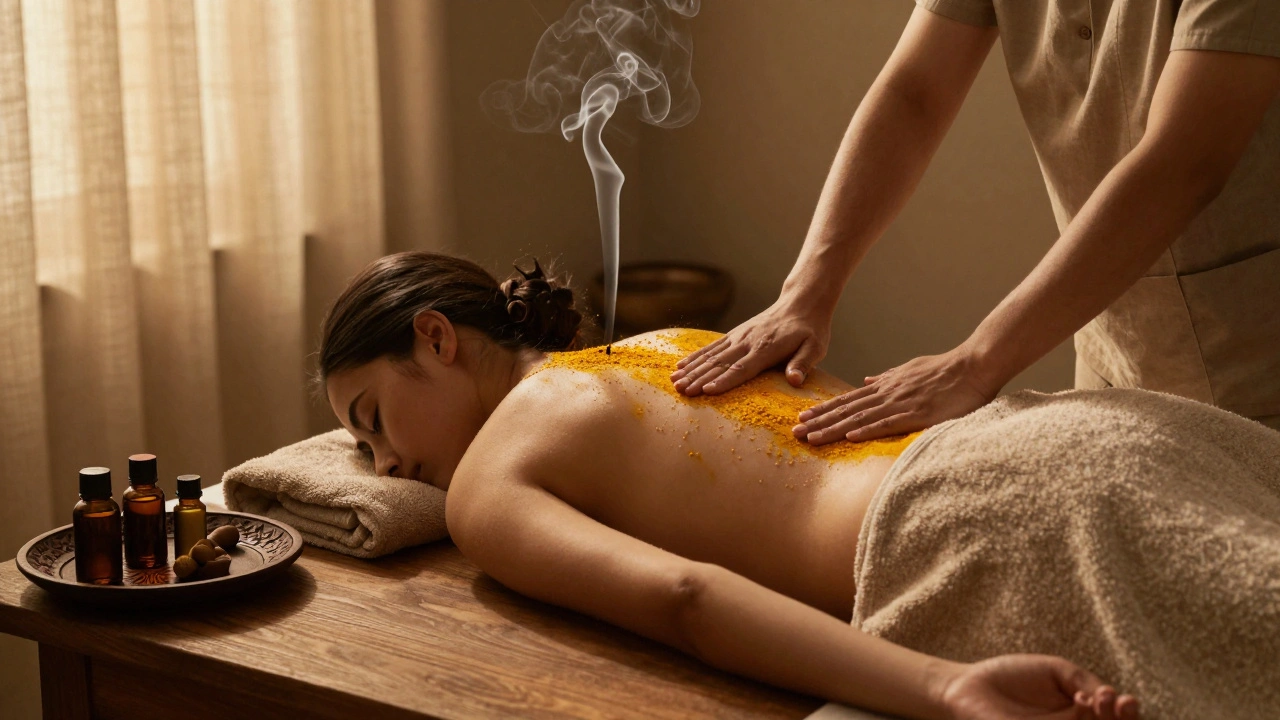Dosha Balance – Massage Techniques to Harmonize Your Body
If you’ve heard about doshas in Ayurveda, you know they’re the three forces that keep you feeling good: Vata, Pitta, and Kapha. When one gets out of sync, you might feel shaky, overheated, or sluggish. The good news? Targeted massage can nudge each dosha back into rhythm, and you don’t need a fancy clinic to start.
Why Dosha Balance Matters
When Vata is too high, you may notice anxiety, dry skin, or restless sleep. A grounding massage with warm oils – think Abhyanga oil massage – can calm that wind‑like energy. Pitta excess shows up as irritation, heat, or digestive flare‑ups. Cooling strokes, light pressure, and soothing scents help cool the fire. Kapha overload feels heavy, sleepy, and congested. Stimulating moves, like the rhythmic pressure of Thai massage, fire up circulation and lift that dampness.
Massage Practices That Support Each Dosha
Abhyanga (Ayurvedic self‑massage) uses warm sesame or herbal oils applied in long, sweeping motions. It’s perfect for Vata because the heat and oil bring moisture and stability. Do it for 5‑15 minutes each morning; you’ll feel steadier and sleep better.
Thai massage combines pressure points, stretches, and rhythmic rocking. The active moves shake up Kapha, clearing blockages and boosting metabolism. Even a short 30‑minute session can leave you feeling lighter and more energetic.
Polarity therapy isn’t a traditional Ayurvedic practice, but its gentle energy balancing mirrors the goal of aligning doshas. Light touch and subtle movements help both Pitta and Vata by reducing stress and encouraging a calm nervous system.
Lava stone (hot stone) massage delivers steady heat deep into muscles. For Pitta, the heat is applied in a controlled way that relaxes without overheating. If you’re prone to inflammation, ask the therapist to keep stone temperature moderate.
Even lymphatic drainage massage can support Kapha by promoting fluid movement and reducing swelling. The light, rhythmic pumping encourages the body’s natural detox pathways.
Here’s a quick routine you can try at home: warm a few drops of sesame oil, rub it between your palms, and massage your legs, arms, and torso using long strokes from the feet upward. Focus on the belly and chest if Vata feels high, or on the shoulders and back if Pitta is firing. Finish with a few deep breaths to seal the calming effect.
Remember, the key isn’t the exact technique but the intention to bring balance. Choose a style that feels right for the dosha you want to soothe, keep the environment calm, and stay consistent. A few minutes each day beats an occasional marathon session.
Ready to try? Pick one of the massages above, set a timer for 10‑20 minutes, and notice how your mood, energy, or sleep shifts. You’ll soon see which touch works best for your unique mix of Vata, Pitta, and Kapha.

- Dec, 10 2025
- 0 Comments
- Joshua Snowden
How Ayurvedic Massage Supports Natural Detoxification
Ayurvedic massage uses warm herbal oils and rhythmic strokes to support the body's natural detox pathways. Unlike juice cleanses, it gently clears toxins through the skin and lymph system, improving energy, sleep, and digestion over time.
Read More
- Sep, 23 2025
- 0 Comments
- Charlotte Mayfair
Ayurvedic Massage: Essential Boost for Your Wellness Routine
Discover why Ayurvedic Massage is a game‑changer for health, how it balances doshas, and practical steps to weave it into your daily wellness routine.
Read More